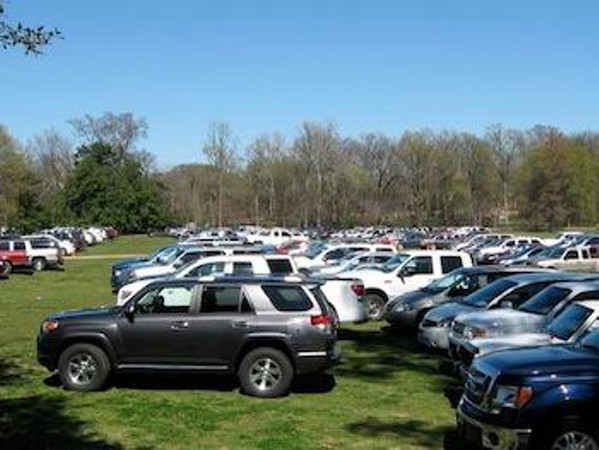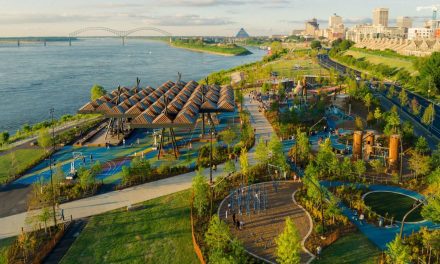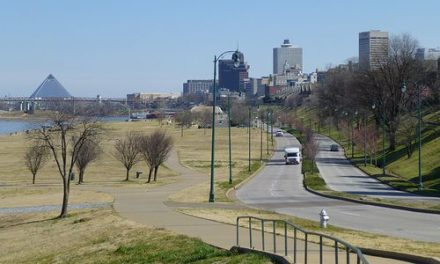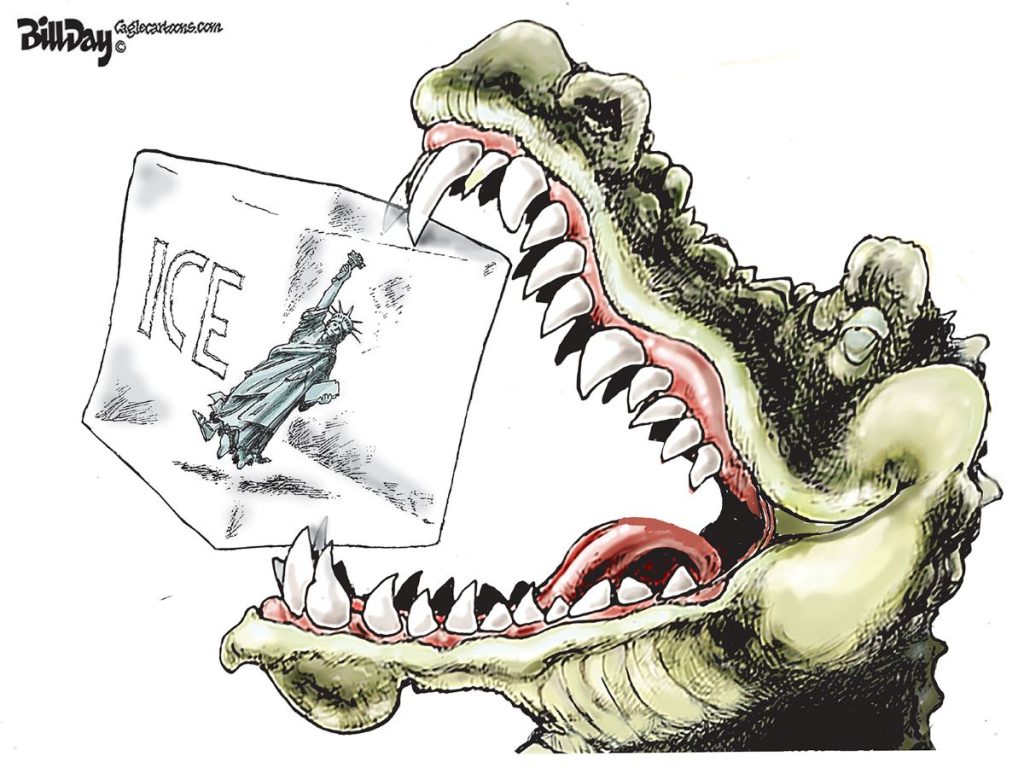The Memphis Zoo regularly reminds us of someone involved in domestic abuse.
Given opportunities to change behavior, they return without apology to their old patterns of conduct. They regularly bulldoze (literally in the case of the zoo) over opportunities to repair relationships. And confronted by someone who can assert authority over them, they go through the motions of conciliation although they have no real intention of changing.
That said, when we refer to “domestic,” we’re using it within the context of community, more like the U.S. Constitution’s use of “to ensure the domestic tranquility,” referring to how important it is to eliminate discord.
The same applies to a city, and that’s why the zoo’s continued sense of entitlement in Overton Park ripples beyond the park itself. It results in disturbances and turbulence that fracture opportunities to unify behind policies in which we need to be working together.
The term, “domestic tranquility” was created in 1787 by the author of the Preamble, Gouverneur Morris, who also said in a comment relevant within the context of zoo parking: “The rich will strive to establish their dominion…They always did…they always will. They will have the same effect here as elsewhere, if we do not, by the power of government keep them in their proper spheres.”
Oversized Hubris and Parking Spaces
The zoo did its best imitation of being cooperative when Memphis Mayor Jim Strickland negotiated an agreement to bring the greensward parking controversy to rest with a compromise that was responsive to both sides of the debate. It was not lost on anyone involved in this issue that the zoo played nice in public while stirring up receptive Memphis City Council members. In its way, it led them to take the unprecedented step of setting out the oversized parking spaces in a resolution.
That now, eight months after the mayor’s intervention, the zoo continues to balk at signing the agreement says volumes about its continued manipulations. And if it is obvious that the excessively sized parking spaces for the zoo gobbles up unnecessary parkland, the zoo’s recent bulldozing – which characteristically began without public explanations – seems intended as much to stick a thumb in the eyes of park lovers as to deal with a need that cannot wait.
It is this unbridled and imperious behavior that has eroded zoo support at a time when its soft revenue realities need all the help they can get, and regardless of which side of the greensward parking issue we’re on, it’s been sad to watch the willingness of the zoo leaders in recent years to squander the considerable good will that had long existed for the institution.
All in all, the zoo has displayed the most unvarnished hubris in our community. It’s worth remembering that hubris is a character flaw in which someone’s ego is so overwhelming that he loses contact with reality. Often, these days, hubris is seen by some, notably Alpha males, as assertive acts taken with extreme self-confidence, but within a domestic framework, it is often undemocratic and reckless.
The Bicentennial Forest
This brand of hubris is also about thinking that respect for others and open communications are unnecessary and don’t apply to you, or at least that’s the only conclusion we can draw from the bulldozing that is taking place behind the Rainbow Lake fence in the shadow of the Old Forest.
Surely, even zoo management knows that if it shows blatant disregard for the Old Forest, the ensuing uproar will make the greensward parking controversy look like a tea party. The ecosystem of the Old Forest dates back 10,000 years, and if zoo leaders can’t see the value of protecting, preserving, and celebrating these 142 acres, it is seemingly impossible to find common ground.
These days, we hear a great deal about celebrating Memphis’ bicentennial in 2019, and incredibly, many of the trees in the Old Forest were there when Memphis was carved out of a gritty frontier settlement. If there is any single action that should be taken to commemorate the city’s 200th anniversary, it should be an official act by City of Memphis to set aside the Old Forest as an immutable Memphis Forest Preserve District.
We know that the Old Forest – or at least 125 acres of it – is already a State Natural Area, but in light of changing national and state conservation standards, Memphis city government should make it clear with an official action of its own that the Old Forest is a Memphis asset that will be protected as part of the city’s commitment rather than because state government has designated it.
1960s Parking Spaces
If the Overton Forest threatens to be a firestorm, greensward parking for the zoo continues to be a simmering flashpoint fueled by a needless argument about the oversized parking spaces created unilaterally by City Council – 10 x 20. After all, no museum or attraction has parking spaces as large as the dimensions set out in the Council resolution in a pique of retaliation against the Overton Park Conservancy.
After all, the Unified Development Code allows for 9 X 18 parking spaces, and 10 X 20 size is something that was in the city code in the 1960s.
If the parking spaces were the size of National Civil Rights Museum, Shelby Farms Park, Children’s Museum, Bass Pro Shops, and Pink Palace, it would free up more than one acre than the present parking spaces requirement – or about the size of a football field, according to Dennis Lynch, Transportation Chair of the Tennessee Chapter of the Sierra Club.
That’s 11% more than reasonably sized parking spaces would require – and 11% more than the present zoo parking lot.
In other words, the parking spaces should be based on “standards, reasonable analysis, and protection of the Greensward as much as possible,” said Mr. Lynch, adding that the 10 X 20 parking space is a solution in search of a problem.
A Logical Question To Ask
In other words, there’s been a suggestion that the zoo did not ask for the oversized parking spaces, but in the wake of the Council’s mandated size, the zoo also has not said that it could live with more reasonably sized spaces.
After all, now that an engineering firm has been chosen to add about 415 parking spaces for the zoo by revamping its main lot and Prentiss Place and building permanent spaces on the greensward, it will need to make calculations for the parking spaces on the greensward.
Once the firm has those calculations, it would be simple – and inexpensive – to use them to determine what the smaller parking spaces could look like and dramatically depict how much of the park can be saved.
It’s hard to think of a reason why everyone, particularly City Council members, wouldn’t like to have this information. If the Memphis Zoo had any interest at all in regaining some of the special respect that it had in this community, it should lead such an effort.
Then again, so far, logic has been as much of a casualty of this controversy as the greensward, but hope springs eternal.
***
Join us at the Smart City Memphis Facebook page for daily articles, reports, and commentaries relevant to Memphis.






I still find it amusing we’re building parking lots as if it’s still the 1960’s whereas more forward looking cities have left us in the dust of their multimodal approaches to urban transit. There have been scores of terrific suggestions that were disregarded. I was a fan of shuttles to and from Tiger Lane, crafting it somewhat like an amusement park ride; and opening up on street parking on Poplar ave. I think there’s no other option than to play hardball with the Zoo from this point forward.
This zoo parking situation is a long standing disaster. Can’t anything ever get done properly in Memphis. Our mayor and community leaders are just plain embarrassing!
Tom,
As always, you capture and describe the story so well. You include the facts, but then you present the story in such a way that readers always follow your discussion to the end, and they finish with a much broader understanding of what’s involved. Thank you so much!
Dennis
Thanks to you, Dennis, for creating facts that challenge conventional thinking. All of us appreciate it.
I continue to believe that we have a city council that is beholden to the Chamber of Commerce (Zoo and Chamber are joined at the hip) not the average citizen. The Chamber has refused public dollars for the sole purpose of being able to fund and elect candidates.
At what point do average citizens organize to elect a more voter centric less good ole boy centric council.
Memphis has always been run by the “good ole boys” which is one of the main reasons the entire city and county are so backward and why we continue to fall behind other cities. Mediocrity seems to be the motto for Memphis and sadly the “good ole boys” see nothing wrong with that.
Let me be clear. There is no compromise that involves using ANY of the Greensward as a parking lot. No one who matters ever agreed to the use of the Greensward. This fight began and will end to protect the entire Kessler Greensward. This fight is not over, in fact it has not really even started.
If the gravel road is allowed to stay on the Greensward and the present plan is executed to turn a part of the Greensward into a permanent parking lot, Overton Park is doomed. The ZOO will eventually take the entire park all the way to Poplar.
See you all on the Grass this spring, oh, wait spring is already here.
Chatul – I think the problem with your comment and your suggestion is that it makes too much sense!
I agree that the 10′ x 20′ space was a product of the past, but it was the requirement up to the approval of the 2010 Unified Development Code. Not sure where the Sierra Club got 9′ x 18′, my read on a daily basis is 9′ x 19′ depending on whether the aisle is set up for one way or two way. But that aside, why wouldn’t (aside from handicapped parking spaces) the zoo what to use a smaller parking space size to increase the number of spaces within the same allotted area?
That’s an interesting metaphor SC has chosen to use — domestic violence. I don’t know that it’s the best one to use, but it was their choice. In the case of the Zoo and the OP Conservancy, OPC sure seems like the abuser. OPC wants to force the Zoo to do something that isn’t good for it (reduce space for its customers) and uses bullying as its justification. “Come on! Just build parking spots the way I want you to do it — don’t worry about if your customers like it or not!” Reminds me of the domestic abuse stories we hear all the time and see on TV, with the abuser saying “Come on! Just do it my way, even if it hurts you!)
I wonder how many of the OPC people who want the zoo to change their parking lot have tried actually going to the zoo and observing the parking with an open mind. Have they watched the big SUVs and big pickup trucks try to navigate the lot? Have they seen the GMC Suburbans stick 3 ft out into the aisleways? Have they tried to get into or out of their cars when there are Cadillac Escalades or GMC Acadias parked near them that fill their parking spaces all the way to the white lines? Have they tried to get kids and strollers out of their cars while in these spaces? Have they tried to help elderly relatives into and out of cars in these spaces?
I think if OPCers were to experience some of these things, they would see that it’s not really practical to have smaller parking spaces. Why make the elderly or children suffer?
It’s been the zoo’s job for 25 years to provide parking for their customers and instead they invaded the park as if it was there. The OPC can’t “force” the zoo to do anything. I wish they could. They should have figured out parking years ago.
Funny, all the other places in Memphis make it with the regular sized parking spaces. Are you saying people who go to the zoo are too dumb to park right? And exactly why would the elderly and children suffer? They manage everywhere else.
The zoo didn’t ask for bigger spaces. It was Sir Reid who added it as a way to stick it to the OPC.
George-
You are apparently ignorant of the fact that those “smaller spaces” are the required standards found in the city/county’s ordinances and thus are the standard used by Walmart, Kroger, Chick-Fil-A, and even local churches. If these people cannot park at the zoo, they must be having problems in all these other places too so your “suffer the little children” makes absolutely no sense. If they are having that much trouble navigating and loading/unloading, I would suggest these same drivers need to downsize their vehicles as they are obviously more than they can handle.
That said, Dr. Brady has accomplished what I would have said was impossible a few short years ago: I have come to greatly resent the Zoo.